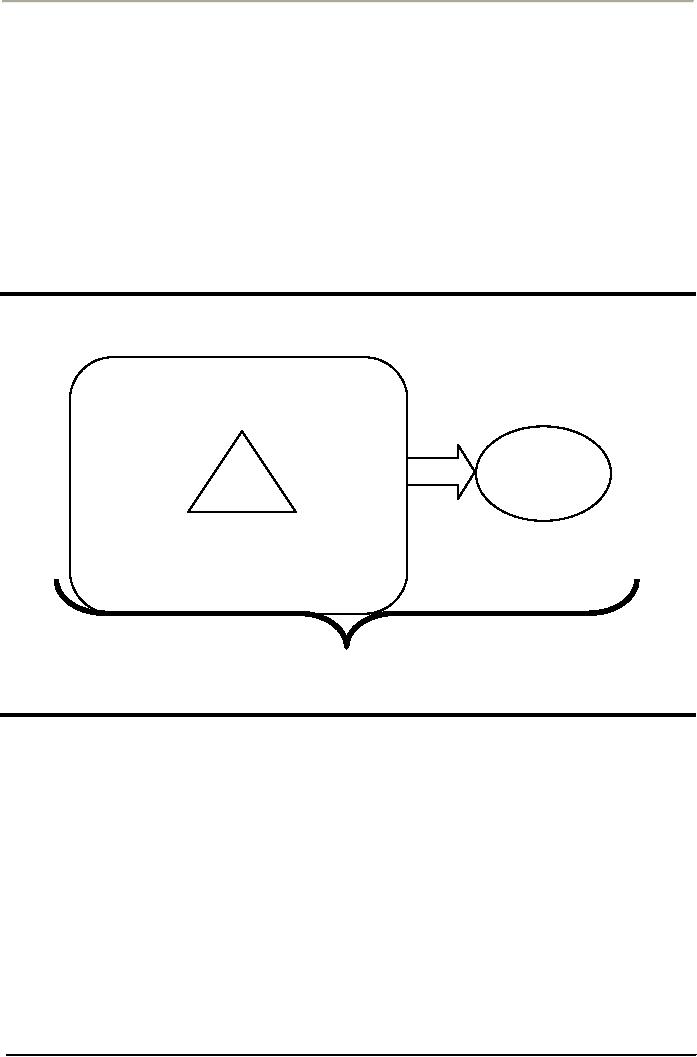 |
LEADERS IN QUALITY REVOLUTION AND DEFINING FOR QUALITY:User-Based |
| << TOTAL QUALITY MANAGEMENT AND PLANNING FOR QUALITY AT OFFICE |
| TAGUCHI LOSS FUNCTION AND QUALITY MANAGEMENT >> |

Total
Quality Management
MGT510
VU
Lesson
# 07
LEADERS
IN QUALITY REVOLUTION AND DEFINING
FOR QUALITY
The
Concept AND Definition of
Quality
While
managers have shown interest in the concept of
quality, many have been
frustrated by its
elusiveness.
They find diverse and
often conflicting definitions in
professional books, journals,
and
news
media. Despite common themes such as
continuous improvement, customer focus,
and excellence,
different
people emphasize different
things. For example, in a
1991 public television special,
"Quality
or
Else," executives, managers, workers,
academics, and others defined
quality variously as
follows:
�
A
pragmatics system of continual
improvement, a way to successfully
organize man and
machines.
�
The
meaning of excellence
�
The
unyielding and continuing effort by
everyone in an organization to understand,
meet, and
exceed
the needs of its
customers
�
The
best product that you
can produce with the materials
that you have to work
with
�
Continuous
good product which a
customer can trust.
�
Producing
a product or service that meets the
needs or expectations of the
customers.
�
Not
only satisfying customers,
but delighting them, innovating,
creating.
Your
own sample of definitions
would probably reveal
similar variety. Different
companies, and
different
people within the same
company, often disagree on the
definition of quality. Sometimes
the
disagreement
is merely due to semantics.
Sometimes they are the
result of focusing on
different
dimensions
of quality. Other times the differences
are more profound, implying
conflicting courses of
action
and approaches to management. Here we
look at several views of quality and
then offer a
definition
that should help to
integrate managerial efforts to
improve quality throughout an
organization.
The
Transcendent View of Quality
The
concept of quality has often
been defined, from a
transcendent view, as "innate
excellence". This
view
implies that high quality is
something timeless and enduring, an
essence that transcends or
rises
above
individual tastes or styles. It often
regards quality as an un-analyzable
property that people
learn
to
recognize through experience, just as
Plato argued that beauty can
be understood only after exposure
to
a series of objects that display
its characteristics.
A
Critique of the Transcendent View of
Quality
Walter
A. Shewhart, the father of modern-day
statistical quality control,
offered the following
criticism
of
the transcendent view of
quality:
Dating
at least from the time of
Aristotle, there has been
some tendency to conceive of quality
as
indicating
the goodness of an object. The
majority of advertisers appeal t the public
upon the basis of
the
quality of product. In so doing,
they implicitly assume that
there is a measure of goodness which
can
be
applied to all kinds of
product, whether it be vacuum tubes,
sewing machines
automobiles.
The
transcendent view of quality
essentially tells a manager
"you will know it when
you see it" and
does
not inform managers how to
pursue excellence. Certainly the notion
of excellence is an important
and
inspirational component of quality.
However, future managers
must have a better understanding
of
the
concept. The definition of quality
must be more pragmatic, more objective,
and more tangible. It
must
inform managers about how to
make improvements.
To
better understand how this
total views of quality
impacts managerial practices, it is
useful to
understand
how managerial approaches to
quality have evolved from a
narrow view, focused
on
26

Total
Quality Management
MGT510
VU
inspection
and conformance to specified standards,
toward a broader view, focused on
organizational
strategy
for providing superior
customer value. We now
discuss the evolution of quality
approaches.
Product-Based
Shewhart
explains that the word
"quality," in Latin, qualities,
comes from quails, meaning
"How
constituted"
and signifies a thing's basic nature.
Emphasizing a product-based view of
quality, Shewhart
argued
that the quality of a manufactured
product may be described in
terms of a set of
characteristics.
Product-based
definitions of quality suit engineers
because they are concerned
with translating
product
requirements
into specific components and
physical dimensions that can be produced.
For example,
measurement
of capacity, inductance, and resistance
may be used to define the
quality of a relay.
So,
according
to this view, quality is a
precise and measurable
variable: differences in quality
reflect
differences
in the quantity of an attribute the
product possess (Garvin,
1988). For example,
high-quality
rugs
have a large number of knots per square
inch. Quality in a rug can
be seen as an inherent
characteristic
that can be assessed
objectively. Since quality reflects the
quantity of attributes
contained
by
a product, and because
attributes are costly to produce,
high quality means higher
cost. In this view, a
Cadillac
loaded with a number of amenities is a
higher-quality car than a
stripped-down Chevrolet.
The
product-based view has some
merit, but it does not
accommodate differences in individual
tastes
and
preferences.
Manufacturing-Based
Another
meaning of the word "quality" is
"the degree of excellence that a
thing possess" once it
is
manufactured.
The manufacturing-based view of quality
focuses on manufacturing and
engineering
practices,
emphasizes conformance to specified requirements,
and relies on statistical analysis
to
measure
quality. As you will see, it
contradicts the notion that higher
quality necessarily corresponds to
higher
cost. Returning to the example of a
relay, Shewhart suggests the overall
quality of a relay can
be
further
expressed in terms of whether it
meets engineering specifications
for product-based
characteristics
(qualities), such as capacity,
inductance, and resistance. To simplify,
let's just consider
two
dimensions, resistance and inductance.
The
quality or degree of excellence of a
product (represented by a point or a
set of two
measurements)
falling
within the rectangular region
would be characterized as good or
satisfactory. A product
with
quality
outside the region, not
conforming to satisfactions, would be characterized as
bad or
unsatisfactory.
Of course, real manufacturing
processes produce a stream of products.
Ideally, each
individual
product has quality that
conforms to specification. However,
variation in the production
process
may produce some products that
are outside the
specifications.
Shewhart
suggested that the fraction
of nonconforming items produced by a manufacturing
process can
be
studied statistically to assess
quality. The knowledge
gained from statistical
studies can be used
to
improve
the control of quality, thus
ensuring that a larger
fraction of the products conform
to
specification.
By stabilizing and reducing variation in
the process, managers can
ensure that product
quality
is always within specification.
Such improvement would mean
fewer defects, les scrap,
less
rework,
and consequently, less
cost.
User-Based
The
user-based perspective does not abandon
manufacturing quality as a strategic
objective, but
provides
a context for it. As Shewhart
says, "The broader concept of economic
control naturally
includes
the problem of continually shifting the
standards expressed in terms of
measurable physical
properties
to meet best the shifting economic
value of these particular
physical characteristics
depending
upon
shifting human wants". The
user-based
view of quality, popular
with people in
marketing,
presumes
that quality rests in "the
eye o the beholder," the user of the
product, rather than an
engineer's
specified
standards.
27

Total
Quality Management
MGT510
VU
The
Concept of Customer Value
Value-based
approaches expand on the user-based
view f quality by incorporating the
notion of "price
of
costs." Regarding value-based approaches,
Garvin (1988) suggests "a
quality product is one
that
provides
performance or conformance at an acceptable price or
cost. By this reasoning, a $ 500
running
shoe,
no matter how well-constructed, could
not be a quality product,
for it would find few
buyers." In
support
of this view, researchers have
demonstrated a positive relationship
between market share
and
value-based
measures of quality. Other
examples contradict this value-based
approach which assumes
that
lower cost always means
higher value to the customer. Designer
dresses that sell for
$5,000, or
luxury
cars that cost more than a
home, suggest that there is another
dimension of value. The
definition
of
customer value offered below
expands on this value-based definition of
quality. In fact, the
customer
value
concept encompasses all of the
foregoing definitions of
quality.
Quality
improvement for customer
value
Customer
Quality
of
Quality
of
Purpose:
design/redesign
performance
customer
value
Quality
of
Design
Product
conformance
Apply
Quality improvement
Process
throughout
We
define customer value as a
combination of benefits and sacrifices
occurring when a customer
uses a
product
or service to meet certain needs.
Those consequences that
contribute to meeting one's
needs are
benefits,
while those consequences
that detract from meeting
one's needs are
sacrifices.
For
example, a person who
purchases a large luxury car
to satisfy a need for pleasurable
travel might
enjoy
such benefits as comfort,
restfulness, and audio entertainment. On
the other hand, the person
also
has
to make certain sacrifices, such as
paying for the vehicle,
difficulties in parking a large
vehicle, and
fuel
and maintenance costs these sacrifices
detract from meeting customer
needs. For example, if the
car
owner
lives in a town that doesn't
have a dealership for the luxury car, he or
she will incur costs
such as
frustration,
time, and the inconvenience of going to
another town for service.
The
concept of customer value
encompasses the benefits and sacrifices
associated with the customer's
use
process throughout the life
cycle of product ownership. As
Deming (1986) suggests:
"Quality must
be
measured by the interaction between three
participants: "Quality must be
measured by the interaction
between
three participants: (1) the product
itself; (2) the user and
how he uses the product, how
he
28

Total
Quality Management
MGT510
VU
installs
it, how he takes care of
it; and (3) instructions for
use, training of customer and
training of
repairman,
service provided for repairs, and
availability of parts."
The
concept of customer value
also encompasses all the
definitions of quality mentioned so
far. To
provide
value to customers, managers
must ensure the
following:
1.
Quality
of Design/Redesign
Product
designs conform to customer
needs (product-based and user-based
quality). For
example,
automobile producers design car
seat to conform to the contours of the
diver's back.
2.
Quality
of Conformance:
Product
manufactured conforms to product designs
(manufacturing-based quality). For
example,
each car seat produced meets
the targeted design
specifications.
3.
Quality
of Performance:
Products
manufactured conform to customer needs by
performing in the field
(user-based
quality).
For example, the car seats
maintain their shape after
years of use.
All
of these dimensions of quality should be
managed through a quality
improvement process
that
enhances
customer value. Placing
quality in the broader context of
customer value counteracts
the
tendency
of people with different
functional orientations within an
organization t take different
views of
quality
(Garvin, 1988). For example,
marketing people tend to have a
user-based and product-based
view
that focuses on matching
product characteristics with
customer perceptions. Engineers, on the
other
hand, tend to take a product-based view
that focuses on defining
product characteristics.
Manufacturing
people tend to view quality
as conformance to specification and
targets.
29
Table of Contents:
- OVERVIEW OF QUALITY MANAGEMENT:PROFESSIONAL MANAGERIAL ERA (1950)
- TOTAL QUALITY MANAGEMENT AND TOTAL ORGANIZATION EXCELLENCE:Measurement
- INTEGRATING PEOPLE AND PERFORMANCE THROUGH QUALITY MANAGEMENT
- FUNDAMENTALS OF TOTAL QUALITY AND RATERS VIEW:The Concept of Quality
- TOTAL QUALITY MANAGEMENT AND GLOBAL COMPETITIVE ADVANTAGE:Customer Focus
- TOTAL QUALITY MANAGEMENT AND PLANNING FOR QUALITY AT OFFICE
- LEADERS IN QUALITY REVOLUTION AND DEFINING FOR QUALITY:User-Based
- TAGUCHI LOSS FUNCTION AND QUALITY MANAGEMENT
- WTO, SHIFTING FOCUS OF CORPORATE CULTURE AND ORGANIZATIONAL MODEL OF MANAGEMENT
- HISTORY OF QUALITY MANAGEMENT PARADIGMS
- DEFINING QUALITY, QUALITY MANAGEMENT AND LINKS WITH PROFITABILITY
- LEARNING ABOUT QUALITY AND APPROACHES FROM QUALITY PHILOSOPHIES
- TOTAL QUALITY MANAGEMENT THEORIES EDWARD DEMING’S SYSTEM OF PROFOUND KNOWLEDGE
- DEMING’S PHILOSOPHY AND 14 POINTS FOR MANAGEMENT:The cost of quality
- DEMING CYCLE AND QUALITY TRILOGY:Juran’s Three Basic Steps to Progress
- JURAN AND CROSBY ON QUALITY AND QUALITY IS FREE:Quality Planning
- CROSBY’S CONCEPT OF COST OF QUALITY:Cost of Quality Attitude
- COSTS OF QUALITY AND RETURN ON QUALITY:Total Quality Costs
- OVERVIEW OF TOTAL QUALITY APPROACHES:The Future of Quality Management
- BUSINESS EXCELLENCE MODELS:Excellence in all functions
- DESIGNING ORGANIZATIONS FOR QUALITY:Customer focus, Leadership
- DEVELOPING ISO QMS FOR CERTIFICATION:Process approach
- ISO 9001(2000) QMS MANAGEMENT RESPONSIBILITY:Issues to be Considered
- ISO 9001(2000) QMS (CLAUSE # 6) RESOURCES MANAGEMENT:Training and Awareness
- ISO 9001(2000) (CLAUSE # 7) PRODUCT REALIZATION AND CUSTOMER RELATED PROCESSES
- ISO 9001(2000) QMS (CLAUSE # 7) CONTROL OF PRODUCTION AND SERVICES
- ISO 9001(2000) QMS (CLAUSE # 8) MEASUREMENT, ANALYSIS, AND IMPROVEMENT
- QUALITY IN SOFTWARE SECTOR AND MATURITY LEVELS:Structure of CMM
- INSTALLING AN ISO -9001 QM SYSTEM:Implementation, Audit and Registration
- CREATING BUSINESS EXCELLENCE:Elements of a Total Quality Culture
- CREATING QUALITY AT STRATEGIC, TACTICAL AND OPERATIONAL LEVEL
- BIG Q AND SMALL q LEADERSHIP FOR QUALITY:The roles of a Quality Leader
- STRATEGIC PLANNING FOR QUALITY AND ADVANCED QUALITY MANAGEMENT TOOLS
- HOSHIN KANRI AND STRATEGIC POLICY DEPLOYMENT:Senior Management
- QUALITY FUNCTION DEPLOYMENT (QFD) AND OTHER TOOLS FOR IMPLEMENTATION
- BASIC SQC IMPROVEMENT TOOLS:TOTAL QUALITY TOOLS DEFINED
- HOW QUALITY IS IMPLEMENTED? A DIALOGUE WITH A QUALITY MANAGER!
- CAUSE AND EFFECT DIAGRAM AND OTHER TOOLS OF QUALITY:Control Charts
- STATISTICAL PROCESS CONTROL (SPC) FOR CONTINUAL QUALITY IMPROVEMENT
- STATISTICAL PROCESS CONTROL….CONTD:Control Charts
- BUILDING QUALITY THROUGH SPC:Types of Data, Defining Process Capability
- AN INTERVIEW SESSION WITH OFFICERS OF A CMMI LEVEL 5 QUALITY IT PAKISTANI COMPANY
- TEAMWORK CULTURE FOR TQM:Steering Committees, Natural Work Teams
- UNDERSTANDING EMPOWERMENT FOR TQ AND CUSTOMER-SUPPLIER RELATIONSHIP
- CSR, INNOVATION, KNOWLEDGE MANAGEMENT AND INTRODUCING LEARNING ORGANIZATION